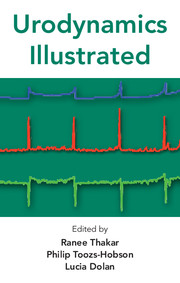Book contents
- Frontmatter
- Contents
- About the authors
- Acknowledgements
- Glossary and abbreviations
- Preface
- 1 Introduction
- 2 Setting up the equipment
- 3 Flow rate testing
- 4 Cystometry
- 5 Videocystourethrography
- 6 Ambulatory urodynamic monitoring
- 7 Urodynamic artefacts
- 8 Assessment of urethral function
- 9 Bladder diaries
- 10 Pad testing
- 11 Pre-test assessment using questionnaires
- 12 Ultrasound as a tool in urodynamics
- Index
2 - Setting up the equipment
Published online by Cambridge University Press: 05 February 2014
- Frontmatter
- Contents
- About the authors
- Acknowledgements
- Glossary and abbreviations
- Preface
- 1 Introduction
- 2 Setting up the equipment
- 3 Flow rate testing
- 4 Cystometry
- 5 Videocystourethrography
- 6 Ambulatory urodynamic monitoring
- 7 Urodynamic artefacts
- 8 Assessment of urethral function
- 9 Bladder diaries
- 10 Pad testing
- 11 Pre-test assessment using questionnaires
- 12 Ultrasound as a tool in urodynamics
- Index
Summary
Introduction
Urodynamic equipment varies in complexity and a range of urodynamics machines is available. The choice of system depends on operator requirements. The Centre for Evidence-based Purchasing Buyers' Guide Urodynamic Systems may help to inform choice.
The urodynamics laboratory
Guidelines have been published and manufacturers normally provide training on any equipment purchased. The exact method of preparing equipment for a test varies. Calibration is generally best left to the service engineer or medical physics personnel and is usually under-taken as part of a service agreement.
Uroflowmetry equipment
Flowmeter
There are two commonly used types of flowmeter: the rotating disc and the weight transducer. The rotating disc can be dismantled for cleaning. A stand-alone flowmeter may be used separately from cystometry.
Commode
A commode with a funnel is placed above the flowmeter to enable accurate aim of the flow on to the flowmeter (Figure 2.1).
Subtracted cystometry equipment
There are three methods, depending on whether pressure is measured using fluid-filled, solid-state or air-filled catheters. The equipment used for each method is described below.
Fluid-filled system
The fluid-filled system is the currently preferred and most common method for cystometry.3 External pressure transducers are mounted on the urodynamic equipment (Figure 2.2) and connected to the fluid-filled lines. The use of external transducers means that the system is prone to movement artefacts. The height of the transducers is adjusted when the patient's position changes relative to them. Fluid-filled lines are prone to air bubbles collecting during the test.
Keywords
- Type
- Chapter
- Information
- Urodynamics Illustrated , pp. 5 - 20Publisher: Cambridge University PressPrint publication year: 2011



